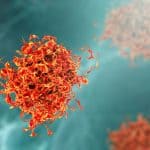Researchers from the University of British Columbia in Canada have revealed that a form of Alzheimer’s disease (AD) can be transmissible via bone marrow transplants.
Published in Stem Cell Reports, researchers believe that amyloid build-up in the brain in AD can be caused by the presence of amyloid outside of the brain.
Currently the most frequent cause of dementia, affecting an estimated 24 million people globally, AD is a brain disorder that progressively deteriorates memory and thinking skills and, eventually, the ability to carry out simple tasks.
Researchers took bone marrow cells from mice that carried a defective version of a gene linked to AD known as the amyloid precursor protein (APP) gene and transplanted them into healthy mice that lacked this genetic fault.
The APP gene plays a pivotal role in producing the APP protein found in tissues and organs, including the brain.
Following transplantation, both groups of mice were found to have developed AD, which researchers identified through symptoms of cognitive decline as well as increased levels of amyloid, a key hallmark of AD, in the brain.
In comparison, researchers found that both groups of mice developed symptoms earlier than the donor mice, which already carried the faulty APP gene.
As researchers used stem cells that had the potential to develop into blood and immune cells but not into nerve cells in the study, they suggest that amyloid build-up in the brain in AD could be triggered by the presence of amyloid outside of the brain.
Dr Chaahat Singh, first author of the study, University of British Columbia, said: “The fact that we could see significant behavioural differences and cognitive decline in the APP-knockouts at six months was surprising but also intriguing because it just showed the appearance of the disease that was being accelerated after being transferred.”
Researchers plan to test whether other types of transplants may have similar results.










